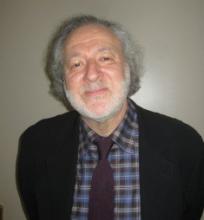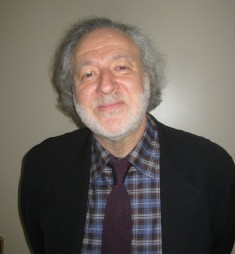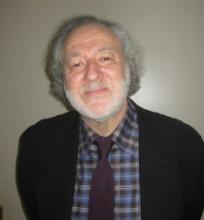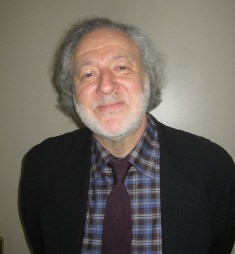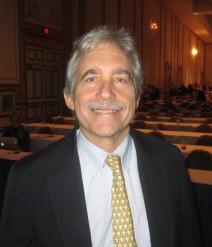User login
Nevada Psychiatric Association (NPA): Annual Psychopharmacology Conference
Psychiatric issues to blame when face, hand transplants fail
LAS VEGAS – Transplant surgeons need help from the mental health community to ensure that patients who undergo hand, face, foot, and other non-solid organ transplants succeed psychiatrically, a consultant for transplant teams says.
That’s because all of the patients who have failed those procedures have done so because of psychiatric issues, according to Dr. José R. Maldonado, the psychiatric consultant for six transplant teams at Stanford (Calif.) University. "If you get a new liver, you wake up in the morning, you have a scar in the middle of your belly, that’s it," he said. "You have pain, but you had pain before the transplant."
But getting a new hand, for example, affects patients differently.
"When you wake up in the morning and look down, you see a stitched hand attached to your body," said Dr. Maldonado, an associate professor of psychiatry and behavioral sciences at the university. "You know that that is not a part of you."
This is the same kind of mental processing that patients must undergo when they get a new face, ear, or other body part. "People have a very hard time accepting that. Those are the patients who have the most significant difficulty adapting to" a transplant, he said.
Some patients stop taking their antirejection drugs and coming to follow-up visits. Others "have gone back to the medical center and requested or demanded that they take the hand off. Some of them have taken a machete and just cut their own hand off," Dr. Maldonado told an audience of psychiatrists and other mental health professionals at the annual psychopharmacology update held by the Nevada Psychiatric Association.
The issue is of particular concern at Stanford, because the university is establishing its own non-solid organ transplant program, which will join a handful of others across the United States.
Psychiatric problems are not unique to face and hand transplants; mental health issues also bedevil organ transplant patients both before and after the procedure. The worse those problems are, the worse patients tend to do. Depression and anxiety are common, as is guilt about benefiting from the donor’s death. When patients realize that their recovery is going to be difficult and slow, they become demoralized.
Heart and lung transplants seem to be the hardest on patients; some develop post-traumatic stress disorder. Liver and kidney transplants take less of a mental toll.
Immunosuppressives have their own psychiatric side effects, which complicate matters, and nearly all psychiatric medications – antidepressants, neuroleptics, benzodiazepines, and the rest – interfere with their action.
Transplants can be hard on psychiatrists, too, especially when transplant teams call to ask whether patients are good candidates for scarce organs. Given the assumed implications, it can be hard to say no.
But doing so isn’t necessarily a death sentence, Dr. Maldonado said.
He and his team have developed a pretransplant questionnaire called the SIPAT (Stanford Integrated Psychosocial Assessment for Transplant) to identify good candidates and the weaknesses that make people poor candidates so they can work on them. It’s available free online.
The 18 questions focus on four areas known to affect transplant outcomes: psychosocial support, substance abuse, mental health, and the way in which patients understand and manage their illnesses.
With the feedback, it is possible to design a treatment plan that will make these patients better transplant candidates or refer them to others who can help. That way, when these patients are seen by transplant teams, they have a better chance of being accepted, he said.
Even after rejection, the door isn’t closed forever. "Telling somebody, ‘You don’t make the cut, and unless you make a dramatic change in your life, you will never make the cut’ [will motivate some to] fix their life, come back in 6 months, and say, ‘Doctor, I’m ready. Let’s do it.’ You repeat the [assessment]," and they are now acceptable candidates, he said.
Dr. Maldonado said he had no disclosures.
LAS VEGAS – Transplant surgeons need help from the mental health community to ensure that patients who undergo hand, face, foot, and other non-solid organ transplants succeed psychiatrically, a consultant for transplant teams says.
That’s because all of the patients who have failed those procedures have done so because of psychiatric issues, according to Dr. José R. Maldonado, the psychiatric consultant for six transplant teams at Stanford (Calif.) University. "If you get a new liver, you wake up in the morning, you have a scar in the middle of your belly, that’s it," he said. "You have pain, but you had pain before the transplant."
But getting a new hand, for example, affects patients differently.
"When you wake up in the morning and look down, you see a stitched hand attached to your body," said Dr. Maldonado, an associate professor of psychiatry and behavioral sciences at the university. "You know that that is not a part of you."
This is the same kind of mental processing that patients must undergo when they get a new face, ear, or other body part. "People have a very hard time accepting that. Those are the patients who have the most significant difficulty adapting to" a transplant, he said.
Some patients stop taking their antirejection drugs and coming to follow-up visits. Others "have gone back to the medical center and requested or demanded that they take the hand off. Some of them have taken a machete and just cut their own hand off," Dr. Maldonado told an audience of psychiatrists and other mental health professionals at the annual psychopharmacology update held by the Nevada Psychiatric Association.
The issue is of particular concern at Stanford, because the university is establishing its own non-solid organ transplant program, which will join a handful of others across the United States.
Psychiatric problems are not unique to face and hand transplants; mental health issues also bedevil organ transplant patients both before and after the procedure. The worse those problems are, the worse patients tend to do. Depression and anxiety are common, as is guilt about benefiting from the donor’s death. When patients realize that their recovery is going to be difficult and slow, they become demoralized.
Heart and lung transplants seem to be the hardest on patients; some develop post-traumatic stress disorder. Liver and kidney transplants take less of a mental toll.
Immunosuppressives have their own psychiatric side effects, which complicate matters, and nearly all psychiatric medications – antidepressants, neuroleptics, benzodiazepines, and the rest – interfere with their action.
Transplants can be hard on psychiatrists, too, especially when transplant teams call to ask whether patients are good candidates for scarce organs. Given the assumed implications, it can be hard to say no.
But doing so isn’t necessarily a death sentence, Dr. Maldonado said.
He and his team have developed a pretransplant questionnaire called the SIPAT (Stanford Integrated Psychosocial Assessment for Transplant) to identify good candidates and the weaknesses that make people poor candidates so they can work on them. It’s available free online.
The 18 questions focus on four areas known to affect transplant outcomes: psychosocial support, substance abuse, mental health, and the way in which patients understand and manage their illnesses.
With the feedback, it is possible to design a treatment plan that will make these patients better transplant candidates or refer them to others who can help. That way, when these patients are seen by transplant teams, they have a better chance of being accepted, he said.
Even after rejection, the door isn’t closed forever. "Telling somebody, ‘You don’t make the cut, and unless you make a dramatic change in your life, you will never make the cut’ [will motivate some to] fix their life, come back in 6 months, and say, ‘Doctor, I’m ready. Let’s do it.’ You repeat the [assessment]," and they are now acceptable candidates, he said.
Dr. Maldonado said he had no disclosures.
LAS VEGAS – Transplant surgeons need help from the mental health community to ensure that patients who undergo hand, face, foot, and other non-solid organ transplants succeed psychiatrically, a consultant for transplant teams says.
That’s because all of the patients who have failed those procedures have done so because of psychiatric issues, according to Dr. José R. Maldonado, the psychiatric consultant for six transplant teams at Stanford (Calif.) University. "If you get a new liver, you wake up in the morning, you have a scar in the middle of your belly, that’s it," he said. "You have pain, but you had pain before the transplant."
But getting a new hand, for example, affects patients differently.
"When you wake up in the morning and look down, you see a stitched hand attached to your body," said Dr. Maldonado, an associate professor of psychiatry and behavioral sciences at the university. "You know that that is not a part of you."
This is the same kind of mental processing that patients must undergo when they get a new face, ear, or other body part. "People have a very hard time accepting that. Those are the patients who have the most significant difficulty adapting to" a transplant, he said.
Some patients stop taking their antirejection drugs and coming to follow-up visits. Others "have gone back to the medical center and requested or demanded that they take the hand off. Some of them have taken a machete and just cut their own hand off," Dr. Maldonado told an audience of psychiatrists and other mental health professionals at the annual psychopharmacology update held by the Nevada Psychiatric Association.
The issue is of particular concern at Stanford, because the university is establishing its own non-solid organ transplant program, which will join a handful of others across the United States.
Psychiatric problems are not unique to face and hand transplants; mental health issues also bedevil organ transplant patients both before and after the procedure. The worse those problems are, the worse patients tend to do. Depression and anxiety are common, as is guilt about benefiting from the donor’s death. When patients realize that their recovery is going to be difficult and slow, they become demoralized.
Heart and lung transplants seem to be the hardest on patients; some develop post-traumatic stress disorder. Liver and kidney transplants take less of a mental toll.
Immunosuppressives have their own psychiatric side effects, which complicate matters, and nearly all psychiatric medications – antidepressants, neuroleptics, benzodiazepines, and the rest – interfere with their action.
Transplants can be hard on psychiatrists, too, especially when transplant teams call to ask whether patients are good candidates for scarce organs. Given the assumed implications, it can be hard to say no.
But doing so isn’t necessarily a death sentence, Dr. Maldonado said.
He and his team have developed a pretransplant questionnaire called the SIPAT (Stanford Integrated Psychosocial Assessment for Transplant) to identify good candidates and the weaknesses that make people poor candidates so they can work on them. It’s available free online.
The 18 questions focus on four areas known to affect transplant outcomes: psychosocial support, substance abuse, mental health, and the way in which patients understand and manage their illnesses.
With the feedback, it is possible to design a treatment plan that will make these patients better transplant candidates or refer them to others who can help. That way, when these patients are seen by transplant teams, they have a better chance of being accepted, he said.
Even after rejection, the door isn’t closed forever. "Telling somebody, ‘You don’t make the cut, and unless you make a dramatic change in your life, you will never make the cut’ [will motivate some to] fix their life, come back in 6 months, and say, ‘Doctor, I’m ready. Let’s do it.’ You repeat the [assessment]," and they are now acceptable candidates, he said.
Dr. Maldonado said he had no disclosures.
EXPERT ANALYSIS FROM THE NPA ANNUAL PSYCHOPHARMACOLOGY UPDATE
Benzodiazepines discouraged for alcohol withdrawal
LAS VEGAS – Alpha-2 agonists and a handful of other agents work at least as well as benzodiazepines for alcohol withdrawal, and they’re safer, according to Dr. José R. Maldonado. That’s why he advises against using benzodiazepines to treat alcohol withdrawal.
The risks of benzodiazepines include delirium, confusion, and respiratory depression. In addition, patients are more likely to go back to drinking if they undergo detox with benzodiazepines rather than a medication from another drug class, said Dr. Maldonado of the department of psychiatry and behavioral sciences at Stanford (Calif.) University.
And perhaps most significantly, chronic alcohol abuse downregulates the receptors targeted by benzodiazepines, which means that people can still go into withdrawal despite the use of these drugs.
Meanwhile, numerous studies show that other agents, including valproic acid, gabapentin, carbamazepine, and alpha-2 blockers like clonidine, are just as effective. "Any of those alone will work," he said. Because of these data, Dr. Maldonado no longer prescribes benzodiazepines, he said at the annual psychopharmacology update held by the Nevada Psychiatric Association.
Instead, Dr. Maldonado and his colleagues use a nonbenzodiazepine withdrawal protocol based on the alpha-2 agonist clonidine because alpha-2 blockers address the norepinephrine overload that drives 85% of the withdrawal symptoms, including cardiac troubles, nausea, vomiting, and tremors. The drugs "slow the release of excess norepinephrine," he said. In one of many studies supporting the point, 80% (12) of 15 surgical patients treated prophylactically with diazepam went into alcohol withdrawal, and 13% (2) had delirium tremens; 10% (3) of 30 treated with clonidine went into withdrawal, and none had delirium tremens (Anesth. Analg. 2004;98:738-44).
For prophylaxis, "we slap 0.1-mg clonidine [patches on each arm]," give patients three doses of 0.1 mg clonidine orally 8 hours apart to hold them over until the patches take full effect, "then load [them] with gabapentin. That’s it. We have had zero patients progress to alcohol withdrawal." The gabapentin is used as a backup. "Our protocol combines treatments so you have a double or triple safety net," Dr. Maldonado said, noting that the combination should be safe for patients with hepatic impairment.
Active withdrawal is treated similarly, with the addition of valproic acid if needed. The rescue protocol combines the intravenous alpha-2 agonist dexmedetomidine with valproic acid. Treatment in all cases lasts at least a week and is stepped down as appropriate.
Time and again, Dr. Maldonado said he has come across patients in active withdrawal despite benzodiazepine treatment. He puts them on the new protocol and stops the benzodiazepines.
Lorazepam is held in reserve in all three scenarios, but so far has not been needed. Benzodiazepines might be useful, however, in acute situations to buy time while the other medications are assembled.
Dr. Maldonado said he had no relevant financial disclosures.
LAS VEGAS – Alpha-2 agonists and a handful of other agents work at least as well as benzodiazepines for alcohol withdrawal, and they’re safer, according to Dr. José R. Maldonado. That’s why he advises against using benzodiazepines to treat alcohol withdrawal.
The risks of benzodiazepines include delirium, confusion, and respiratory depression. In addition, patients are more likely to go back to drinking if they undergo detox with benzodiazepines rather than a medication from another drug class, said Dr. Maldonado of the department of psychiatry and behavioral sciences at Stanford (Calif.) University.
And perhaps most significantly, chronic alcohol abuse downregulates the receptors targeted by benzodiazepines, which means that people can still go into withdrawal despite the use of these drugs.
Meanwhile, numerous studies show that other agents, including valproic acid, gabapentin, carbamazepine, and alpha-2 blockers like clonidine, are just as effective. "Any of those alone will work," he said. Because of these data, Dr. Maldonado no longer prescribes benzodiazepines, he said at the annual psychopharmacology update held by the Nevada Psychiatric Association.
Instead, Dr. Maldonado and his colleagues use a nonbenzodiazepine withdrawal protocol based on the alpha-2 agonist clonidine because alpha-2 blockers address the norepinephrine overload that drives 85% of the withdrawal symptoms, including cardiac troubles, nausea, vomiting, and tremors. The drugs "slow the release of excess norepinephrine," he said. In one of many studies supporting the point, 80% (12) of 15 surgical patients treated prophylactically with diazepam went into alcohol withdrawal, and 13% (2) had delirium tremens; 10% (3) of 30 treated with clonidine went into withdrawal, and none had delirium tremens (Anesth. Analg. 2004;98:738-44).
For prophylaxis, "we slap 0.1-mg clonidine [patches on each arm]," give patients three doses of 0.1 mg clonidine orally 8 hours apart to hold them over until the patches take full effect, "then load [them] with gabapentin. That’s it. We have had zero patients progress to alcohol withdrawal." The gabapentin is used as a backup. "Our protocol combines treatments so you have a double or triple safety net," Dr. Maldonado said, noting that the combination should be safe for patients with hepatic impairment.
Active withdrawal is treated similarly, with the addition of valproic acid if needed. The rescue protocol combines the intravenous alpha-2 agonist dexmedetomidine with valproic acid. Treatment in all cases lasts at least a week and is stepped down as appropriate.
Time and again, Dr. Maldonado said he has come across patients in active withdrawal despite benzodiazepine treatment. He puts them on the new protocol and stops the benzodiazepines.
Lorazepam is held in reserve in all three scenarios, but so far has not been needed. Benzodiazepines might be useful, however, in acute situations to buy time while the other medications are assembled.
Dr. Maldonado said he had no relevant financial disclosures.
LAS VEGAS – Alpha-2 agonists and a handful of other agents work at least as well as benzodiazepines for alcohol withdrawal, and they’re safer, according to Dr. José R. Maldonado. That’s why he advises against using benzodiazepines to treat alcohol withdrawal.
The risks of benzodiazepines include delirium, confusion, and respiratory depression. In addition, patients are more likely to go back to drinking if they undergo detox with benzodiazepines rather than a medication from another drug class, said Dr. Maldonado of the department of psychiatry and behavioral sciences at Stanford (Calif.) University.
And perhaps most significantly, chronic alcohol abuse downregulates the receptors targeted by benzodiazepines, which means that people can still go into withdrawal despite the use of these drugs.
Meanwhile, numerous studies show that other agents, including valproic acid, gabapentin, carbamazepine, and alpha-2 blockers like clonidine, are just as effective. "Any of those alone will work," he said. Because of these data, Dr. Maldonado no longer prescribes benzodiazepines, he said at the annual psychopharmacology update held by the Nevada Psychiatric Association.
Instead, Dr. Maldonado and his colleagues use a nonbenzodiazepine withdrawal protocol based on the alpha-2 agonist clonidine because alpha-2 blockers address the norepinephrine overload that drives 85% of the withdrawal symptoms, including cardiac troubles, nausea, vomiting, and tremors. The drugs "slow the release of excess norepinephrine," he said. In one of many studies supporting the point, 80% (12) of 15 surgical patients treated prophylactically with diazepam went into alcohol withdrawal, and 13% (2) had delirium tremens; 10% (3) of 30 treated with clonidine went into withdrawal, and none had delirium tremens (Anesth. Analg. 2004;98:738-44).
For prophylaxis, "we slap 0.1-mg clonidine [patches on each arm]," give patients three doses of 0.1 mg clonidine orally 8 hours apart to hold them over until the patches take full effect, "then load [them] with gabapentin. That’s it. We have had zero patients progress to alcohol withdrawal." The gabapentin is used as a backup. "Our protocol combines treatments so you have a double or triple safety net," Dr. Maldonado said, noting that the combination should be safe for patients with hepatic impairment.
Active withdrawal is treated similarly, with the addition of valproic acid if needed. The rescue protocol combines the intravenous alpha-2 agonist dexmedetomidine with valproic acid. Treatment in all cases lasts at least a week and is stepped down as appropriate.
Time and again, Dr. Maldonado said he has come across patients in active withdrawal despite benzodiazepine treatment. He puts them on the new protocol and stops the benzodiazepines.
Lorazepam is held in reserve in all three scenarios, but so far has not been needed. Benzodiazepines might be useful, however, in acute situations to buy time while the other medications are assembled.
Dr. Maldonado said he had no relevant financial disclosures.
EXPERT ANALYSIS FROM THE NPA ANNUAL PSYCHOPHARMOCOLOGY UPDATE
End-of-life hypoactive delirium responds to antipsychotics
LAS VEGAS – Hypoactive delirium is common in terminally ill patients; just as disconcerting as hyperactive, agitated delirium; and just as likely to respond to antipsychotics, according to Dr. William Breitbart, chief of the psychiatry service at Memorial Sloan-Kettering Cancer Center, New York.
Outwardly, patients with hypoactive delirium appear less distressed than do patients with hyperactive delirium, yet they report just as much distress and about half of them report delusions and hallucinations.
About 80% of terminal cancer patients become delirious in their final weeks of life, and about half of them experience hypoactive delirium in association with opioid analgesia, metabolic derangements, and organ failure.
Addressing hypoactive delirium requires diplomacy, especially in patients with hallucinations, he said. Dying patients often see dead relatives – parents, for instance, who come to accompany them to the afterlife. "For me to barrel into the room and say those are psychotic symptoms or describe these experiences as absurd would be insensitive; they are profoundly meaningful experiences to patients and families," Dr. Breitbart said at the annual psychopharmacology update held by the Nevada Psychiatric Association. Instead, he acknowledges the significance of the visions, but notes that they can rapidly change to very frightening visions. He then discusses the use of medications to avert this possible progression.
Antipsychotics help to reduce agitation, psychotic symptoms, and more subtle problems such as disorientation in these patients, Dr. Breitbart said at the conference. When the underlying metabolic problems can be addressed in cancer patients, the drugs can be used for a few weeks and this sort of short-term use is not associated with increased mortality, he said. The ultimate goal of treatment is an "upright patient who is awake, alert, and conversant with family and staff."
In the patient with imminent terminal illness, however, sometimes "the best you can achieve (with antipsychotics) is a sedated patient," he said.
Low-dose haloperidol is generally preferred; atypical antipsychotics have not proven any more effective or safer. Close monitoring for side effects – particularly prolonged QTc intervals and extrapyramidal symptoms – is essential (J. Clin. Oncol. 2012;30:1206-14).
Haloperidol and chlorpromazine work equally well in both types of delirium. Dr. Breitbart said he’ll sometimes add chlorpromazine when agitation fails to respond to haloperidol alone.
Aripiprazole may work a bit better in hypoactive patients; olanzapine may be preferred in hyperactive patients. Risperidone is another option.
"We tend not to use benzodiazepines because they worsen delirium, but if your goal is to sedate a patient, then benzodiazepines are helpful. We often use haloperidol in combination with a drug like lorazepam to help get an agitated patient under better control," he said.
Dr. Breitbart said he has no relevant financial relationships with commercial interests.
LAS VEGAS – Hypoactive delirium is common in terminally ill patients; just as disconcerting as hyperactive, agitated delirium; and just as likely to respond to antipsychotics, according to Dr. William Breitbart, chief of the psychiatry service at Memorial Sloan-Kettering Cancer Center, New York.
Outwardly, patients with hypoactive delirium appear less distressed than do patients with hyperactive delirium, yet they report just as much distress and about half of them report delusions and hallucinations.
About 80% of terminal cancer patients become delirious in their final weeks of life, and about half of them experience hypoactive delirium in association with opioid analgesia, metabolic derangements, and organ failure.
Addressing hypoactive delirium requires diplomacy, especially in patients with hallucinations, he said. Dying patients often see dead relatives – parents, for instance, who come to accompany them to the afterlife. "For me to barrel into the room and say those are psychotic symptoms or describe these experiences as absurd would be insensitive; they are profoundly meaningful experiences to patients and families," Dr. Breitbart said at the annual psychopharmacology update held by the Nevada Psychiatric Association. Instead, he acknowledges the significance of the visions, but notes that they can rapidly change to very frightening visions. He then discusses the use of medications to avert this possible progression.
Antipsychotics help to reduce agitation, psychotic symptoms, and more subtle problems such as disorientation in these patients, Dr. Breitbart said at the conference. When the underlying metabolic problems can be addressed in cancer patients, the drugs can be used for a few weeks and this sort of short-term use is not associated with increased mortality, he said. The ultimate goal of treatment is an "upright patient who is awake, alert, and conversant with family and staff."
In the patient with imminent terminal illness, however, sometimes "the best you can achieve (with antipsychotics) is a sedated patient," he said.
Low-dose haloperidol is generally preferred; atypical antipsychotics have not proven any more effective or safer. Close monitoring for side effects – particularly prolonged QTc intervals and extrapyramidal symptoms – is essential (J. Clin. Oncol. 2012;30:1206-14).
Haloperidol and chlorpromazine work equally well in both types of delirium. Dr. Breitbart said he’ll sometimes add chlorpromazine when agitation fails to respond to haloperidol alone.
Aripiprazole may work a bit better in hypoactive patients; olanzapine may be preferred in hyperactive patients. Risperidone is another option.
"We tend not to use benzodiazepines because they worsen delirium, but if your goal is to sedate a patient, then benzodiazepines are helpful. We often use haloperidol in combination with a drug like lorazepam to help get an agitated patient under better control," he said.
Dr. Breitbart said he has no relevant financial relationships with commercial interests.
LAS VEGAS – Hypoactive delirium is common in terminally ill patients; just as disconcerting as hyperactive, agitated delirium; and just as likely to respond to antipsychotics, according to Dr. William Breitbart, chief of the psychiatry service at Memorial Sloan-Kettering Cancer Center, New York.
Outwardly, patients with hypoactive delirium appear less distressed than do patients with hyperactive delirium, yet they report just as much distress and about half of them report delusions and hallucinations.
About 80% of terminal cancer patients become delirious in their final weeks of life, and about half of them experience hypoactive delirium in association with opioid analgesia, metabolic derangements, and organ failure.
Addressing hypoactive delirium requires diplomacy, especially in patients with hallucinations, he said. Dying patients often see dead relatives – parents, for instance, who come to accompany them to the afterlife. "For me to barrel into the room and say those are psychotic symptoms or describe these experiences as absurd would be insensitive; they are profoundly meaningful experiences to patients and families," Dr. Breitbart said at the annual psychopharmacology update held by the Nevada Psychiatric Association. Instead, he acknowledges the significance of the visions, but notes that they can rapidly change to very frightening visions. He then discusses the use of medications to avert this possible progression.
Antipsychotics help to reduce agitation, psychotic symptoms, and more subtle problems such as disorientation in these patients, Dr. Breitbart said at the conference. When the underlying metabolic problems can be addressed in cancer patients, the drugs can be used for a few weeks and this sort of short-term use is not associated with increased mortality, he said. The ultimate goal of treatment is an "upright patient who is awake, alert, and conversant with family and staff."
In the patient with imminent terminal illness, however, sometimes "the best you can achieve (with antipsychotics) is a sedated patient," he said.
Low-dose haloperidol is generally preferred; atypical antipsychotics have not proven any more effective or safer. Close monitoring for side effects – particularly prolonged QTc intervals and extrapyramidal symptoms – is essential (J. Clin. Oncol. 2012;30:1206-14).
Haloperidol and chlorpromazine work equally well in both types of delirium. Dr. Breitbart said he’ll sometimes add chlorpromazine when agitation fails to respond to haloperidol alone.
Aripiprazole may work a bit better in hypoactive patients; olanzapine may be preferred in hyperactive patients. Risperidone is another option.
"We tend not to use benzodiazepines because they worsen delirium, but if your goal is to sedate a patient, then benzodiazepines are helpful. We often use haloperidol in combination with a drug like lorazepam to help get an agitated patient under better control," he said.
Dr. Breitbart said he has no relevant financial relationships with commercial interests.
AT NPA ANNUAL PSYCHOPHARMACOLOGY CONFERENCE
Harness side effects when selecting psychotropics for cancer patients
LAS VEGAS – When it comes to treating depression in end-stage cancer patients, the side effects of psychotropics can prove almost as helpful as their primary indications.
"We tend to select drugs based on the side effects we want to utilize," said Dr. William S. Breitbart, chief of the Memorial Sloan-Kettering Cancer Center Psychiatry Service in New York.
For instance, sedating, constipating medicines such as tricyclics would be work well for a depressed patient with insomnia, diarrhea, and mouth sores. However, it would make sense to avoid those side effects in a patient with constipation or one who sleeps too much because of opioid pain management, he said.
Tricyclics also have some pain-fighting ability, and antidepressants in general help with dyspnea and can, along with neuroleptics, counter steroid side effects.
Drugs such as venlafaxine, mirtazapine, citalopram, and escitalopram are favored for terminally ill cancer patients, when possible, because they have little effect on the cytochrome P450 system, and so are unlikely to interfere with the blood levels of chemotherapeutic agents such as tamoxifen, Dr. Breitbart said at the Nevada Psychiatric Association’s Annual Psychopharmacology Update conference.
In addition, excitement in psychiatry about ketamine as an antidepressant has also been extended to patients in palliative care settings. However, Dr. Breitbart said, so far, there has not been enough controlled trials to support the use of ketamine with these terminal patients.
The side effects of other psychotropics are useful, too. Mirtazapine can help patients gain weight; olanzapine can do that, has analgesic properties, and helps with nausea and vomiting. Fitful sleep can be calmed by various agents with sedating properties.
Pain, metabolic abnormalities, anemia, adrenal insufficiency, hypogonadism, and chemotherapy agents themselves are among the factors that can contribute to depression in cancer patients. Patients with pancreatic cancer have higher rates of depression than do those with other intra-abdominal or retroperitoneal cancers, as well, perhaps because they have high levels of endogenous proinflammatory cytokines, which have been linked to depression.
About 60% of patients will respond to antidepressant therapy; individual and group psychotherapy, music and relaxation therapy, and social support help, too.
Psychostimulants help improve mood, cognition, and concentration, as well. "We occasionally use combinations of psychostimulants with [selective serotonin reuptake inhibitors] to jump-start the effect of the antidepressant agent." They also potentiate the analgesic effect of opioids and counteract their sedation, "so you can achieve analgesia at higher [opioid] doses" instead of limiting them because of sedation, Dr. Breitbart said.
Rather then suppressing appetite, psychostimulants give cancer patients a better sense of well-being and improve their appetite, which may help them gain a few pounds.
It’s a challenge to identify depression in advanced cancer, because fatigue, weight loss, and other effects of cancer and its treatment mimic depression. One solution is to increase the threshold for depression diagnoses, requiring a couple more associated symptoms instead of the usual four. Also, just the simple question, "Have you been depressed most of the time for the past 2 weeks" is a great screening tool for advanced cancer patients, he said.
Dr. Breitbart said he has no relevant commercial interests.
LAS VEGAS – When it comes to treating depression in end-stage cancer patients, the side effects of psychotropics can prove almost as helpful as their primary indications.
"We tend to select drugs based on the side effects we want to utilize," said Dr. William S. Breitbart, chief of the Memorial Sloan-Kettering Cancer Center Psychiatry Service in New York.
For instance, sedating, constipating medicines such as tricyclics would be work well for a depressed patient with insomnia, diarrhea, and mouth sores. However, it would make sense to avoid those side effects in a patient with constipation or one who sleeps too much because of opioid pain management, he said.
Tricyclics also have some pain-fighting ability, and antidepressants in general help with dyspnea and can, along with neuroleptics, counter steroid side effects.
Drugs such as venlafaxine, mirtazapine, citalopram, and escitalopram are favored for terminally ill cancer patients, when possible, because they have little effect on the cytochrome P450 system, and so are unlikely to interfere with the blood levels of chemotherapeutic agents such as tamoxifen, Dr. Breitbart said at the Nevada Psychiatric Association’s Annual Psychopharmacology Update conference.
In addition, excitement in psychiatry about ketamine as an antidepressant has also been extended to patients in palliative care settings. However, Dr. Breitbart said, so far, there has not been enough controlled trials to support the use of ketamine with these terminal patients.
The side effects of other psychotropics are useful, too. Mirtazapine can help patients gain weight; olanzapine can do that, has analgesic properties, and helps with nausea and vomiting. Fitful sleep can be calmed by various agents with sedating properties.
Pain, metabolic abnormalities, anemia, adrenal insufficiency, hypogonadism, and chemotherapy agents themselves are among the factors that can contribute to depression in cancer patients. Patients with pancreatic cancer have higher rates of depression than do those with other intra-abdominal or retroperitoneal cancers, as well, perhaps because they have high levels of endogenous proinflammatory cytokines, which have been linked to depression.
About 60% of patients will respond to antidepressant therapy; individual and group psychotherapy, music and relaxation therapy, and social support help, too.
Psychostimulants help improve mood, cognition, and concentration, as well. "We occasionally use combinations of psychostimulants with [selective serotonin reuptake inhibitors] to jump-start the effect of the antidepressant agent." They also potentiate the analgesic effect of opioids and counteract their sedation, "so you can achieve analgesia at higher [opioid] doses" instead of limiting them because of sedation, Dr. Breitbart said.
Rather then suppressing appetite, psychostimulants give cancer patients a better sense of well-being and improve their appetite, which may help them gain a few pounds.
It’s a challenge to identify depression in advanced cancer, because fatigue, weight loss, and other effects of cancer and its treatment mimic depression. One solution is to increase the threshold for depression diagnoses, requiring a couple more associated symptoms instead of the usual four. Also, just the simple question, "Have you been depressed most of the time for the past 2 weeks" is a great screening tool for advanced cancer patients, he said.
Dr. Breitbart said he has no relevant commercial interests.
LAS VEGAS – When it comes to treating depression in end-stage cancer patients, the side effects of psychotropics can prove almost as helpful as their primary indications.
"We tend to select drugs based on the side effects we want to utilize," said Dr. William S. Breitbart, chief of the Memorial Sloan-Kettering Cancer Center Psychiatry Service in New York.
For instance, sedating, constipating medicines such as tricyclics would be work well for a depressed patient with insomnia, diarrhea, and mouth sores. However, it would make sense to avoid those side effects in a patient with constipation or one who sleeps too much because of opioid pain management, he said.
Tricyclics also have some pain-fighting ability, and antidepressants in general help with dyspnea and can, along with neuroleptics, counter steroid side effects.
Drugs such as venlafaxine, mirtazapine, citalopram, and escitalopram are favored for terminally ill cancer patients, when possible, because they have little effect on the cytochrome P450 system, and so are unlikely to interfere with the blood levels of chemotherapeutic agents such as tamoxifen, Dr. Breitbart said at the Nevada Psychiatric Association’s Annual Psychopharmacology Update conference.
In addition, excitement in psychiatry about ketamine as an antidepressant has also been extended to patients in palliative care settings. However, Dr. Breitbart said, so far, there has not been enough controlled trials to support the use of ketamine with these terminal patients.
The side effects of other psychotropics are useful, too. Mirtazapine can help patients gain weight; olanzapine can do that, has analgesic properties, and helps with nausea and vomiting. Fitful sleep can be calmed by various agents with sedating properties.
Pain, metabolic abnormalities, anemia, adrenal insufficiency, hypogonadism, and chemotherapy agents themselves are among the factors that can contribute to depression in cancer patients. Patients with pancreatic cancer have higher rates of depression than do those with other intra-abdominal or retroperitoneal cancers, as well, perhaps because they have high levels of endogenous proinflammatory cytokines, which have been linked to depression.
About 60% of patients will respond to antidepressant therapy; individual and group psychotherapy, music and relaxation therapy, and social support help, too.
Psychostimulants help improve mood, cognition, and concentration, as well. "We occasionally use combinations of psychostimulants with [selective serotonin reuptake inhibitors] to jump-start the effect of the antidepressant agent." They also potentiate the analgesic effect of opioids and counteract their sedation, "so you can achieve analgesia at higher [opioid] doses" instead of limiting them because of sedation, Dr. Breitbart said.
Rather then suppressing appetite, psychostimulants give cancer patients a better sense of well-being and improve their appetite, which may help them gain a few pounds.
It’s a challenge to identify depression in advanced cancer, because fatigue, weight loss, and other effects of cancer and its treatment mimic depression. One solution is to increase the threshold for depression diagnoses, requiring a couple more associated symptoms instead of the usual four. Also, just the simple question, "Have you been depressed most of the time for the past 2 weeks" is a great screening tool for advanced cancer patients, he said.
Dr. Breitbart said he has no relevant commercial interests.
FROM THE NPA ANNUAL PSYCHO-PHARMACOLOGY CONFERENCE
Take a pass on cytochrome P450 polymorphism tests
Cytochrome P450 polymorphism tests aren’t ready for prime time, but they continue to be promoted to physicians and patients, according to Dr. Thomas Strouse.
The tests use a drop of blood or saliva or a cheek swab to detect genetic variations in cytochrome P450 (CYP450) drug-metabolism liver enzymes. The goal is to match drugs with patient metabolic profiles, thereby increasing efficacy and reducing side effects and drug-drug interactions.
It "would be really terrific" if they did that, but so far, having that information hasn’t made much difference in most drug trials. "I don’t think we’re there [yet]. We really don’t know much about [using] cytochrome P450 [variants to] predict adverse events" and outcomes, said Dr. Strouse, medical director of the University of California, Los Angeles, Resnick Neuropsychiatric Hospital.
Several studies have failed to show a relationship between poor metabolic status and clinical response. In one, P450 status did not predict citalopram response or toleration (PLoS One 2008;3:e1872).
Instead, what is emerging is evidence that variations in neurotransmitter receptor and transporter genes "are more relevant" for predicting drug response (J. Clin. Psychopharmacol. 2006;26:192-7), he said at the annual psychopharmacology update sponsored by the Nevada Psychiatric Association.
The search will continue for quick, inexpensive ways to better match patients with pharmaceuticals, Dr. Strouse added.
In the meantime, with polypharmacy on the rise in the treatment of psychiatric conditions, it’s best to avoid – when possible – drugs that significantly impact the blood levels of others. The list includes potent P450 inhibitors, such as fluoxetine and paroxetine, and P450 inducers such as carbamazepine. But it also includes alcohol, cigarette smoke, and to a lesser extent, nicotine patches and smoked marijuana. Tricyclic antidepressants and other drugs with narrow therapeutic indices are probably best avoided, as well.
It’s wise to select pharmaceuticals that are metabolized by more than one P450 pathway. Indiana University has a website, probably "the best online resource" for useful drug metabolism information, that can identify those drugs, he said.
"A lot of us have had the experience of inheriting patients who are on what looks like pretty insane polypharmacy" – eight or more psychiatric medications at once – "and yet the patient says, ‘This is really what it’s taken for me to stay well,’ " Dr. Strouse said.
Sorting out those patients’ potential drug interactions is "impossible," he cautioned. "The mathematical possibilities quickly approach googolplex" when people are on so many pharmaceuticals, he noted.
Some drugs, however, are particularly useful in those situations, because they don’t tweak P450 enzymes to any extent. The list includes lamotrigine, sertraline, and citalopram, although citalopram should be capped at 40 mg/day to prevent QTc interval prolongation.
"If you endeavor to simplify the regimen, you have to do it in a very cautious, stepwise fashion," he noted, with an eye out for clinical worsening, loss of benefit, and emerging side effects.
Let patients know about the potential problems, too. "I’ve found that when I engage my patients in the monitoring, it very much strengthens the therapeutic relationship," Dr. Strouse said.
He reported that he has no relevant financial conflicts.
Cytochrome P450 polymorphism tests aren’t ready for prime time, but they continue to be promoted to physicians and patients, according to Dr. Thomas Strouse.
The tests use a drop of blood or saliva or a cheek swab to detect genetic variations in cytochrome P450 (CYP450) drug-metabolism liver enzymes. The goal is to match drugs with patient metabolic profiles, thereby increasing efficacy and reducing side effects and drug-drug interactions.
It "would be really terrific" if they did that, but so far, having that information hasn’t made much difference in most drug trials. "I don’t think we’re there [yet]. We really don’t know much about [using] cytochrome P450 [variants to] predict adverse events" and outcomes, said Dr. Strouse, medical director of the University of California, Los Angeles, Resnick Neuropsychiatric Hospital.
Several studies have failed to show a relationship between poor metabolic status and clinical response. In one, P450 status did not predict citalopram response or toleration (PLoS One 2008;3:e1872).
Instead, what is emerging is evidence that variations in neurotransmitter receptor and transporter genes "are more relevant" for predicting drug response (J. Clin. Psychopharmacol. 2006;26:192-7), he said at the annual psychopharmacology update sponsored by the Nevada Psychiatric Association.
The search will continue for quick, inexpensive ways to better match patients with pharmaceuticals, Dr. Strouse added.
In the meantime, with polypharmacy on the rise in the treatment of psychiatric conditions, it’s best to avoid – when possible – drugs that significantly impact the blood levels of others. The list includes potent P450 inhibitors, such as fluoxetine and paroxetine, and P450 inducers such as carbamazepine. But it also includes alcohol, cigarette smoke, and to a lesser extent, nicotine patches and smoked marijuana. Tricyclic antidepressants and other drugs with narrow therapeutic indices are probably best avoided, as well.
It’s wise to select pharmaceuticals that are metabolized by more than one P450 pathway. Indiana University has a website, probably "the best online resource" for useful drug metabolism information, that can identify those drugs, he said.
"A lot of us have had the experience of inheriting patients who are on what looks like pretty insane polypharmacy" – eight or more psychiatric medications at once – "and yet the patient says, ‘This is really what it’s taken for me to stay well,’ " Dr. Strouse said.
Sorting out those patients’ potential drug interactions is "impossible," he cautioned. "The mathematical possibilities quickly approach googolplex" when people are on so many pharmaceuticals, he noted.
Some drugs, however, are particularly useful in those situations, because they don’t tweak P450 enzymes to any extent. The list includes lamotrigine, sertraline, and citalopram, although citalopram should be capped at 40 mg/day to prevent QTc interval prolongation.
"If you endeavor to simplify the regimen, you have to do it in a very cautious, stepwise fashion," he noted, with an eye out for clinical worsening, loss of benefit, and emerging side effects.
Let patients know about the potential problems, too. "I’ve found that when I engage my patients in the monitoring, it very much strengthens the therapeutic relationship," Dr. Strouse said.
He reported that he has no relevant financial conflicts.
Cytochrome P450 polymorphism tests aren’t ready for prime time, but they continue to be promoted to physicians and patients, according to Dr. Thomas Strouse.
The tests use a drop of blood or saliva or a cheek swab to detect genetic variations in cytochrome P450 (CYP450) drug-metabolism liver enzymes. The goal is to match drugs with patient metabolic profiles, thereby increasing efficacy and reducing side effects and drug-drug interactions.
It "would be really terrific" if they did that, but so far, having that information hasn’t made much difference in most drug trials. "I don’t think we’re there [yet]. We really don’t know much about [using] cytochrome P450 [variants to] predict adverse events" and outcomes, said Dr. Strouse, medical director of the University of California, Los Angeles, Resnick Neuropsychiatric Hospital.
Several studies have failed to show a relationship between poor metabolic status and clinical response. In one, P450 status did not predict citalopram response or toleration (PLoS One 2008;3:e1872).
Instead, what is emerging is evidence that variations in neurotransmitter receptor and transporter genes "are more relevant" for predicting drug response (J. Clin. Psychopharmacol. 2006;26:192-7), he said at the annual psychopharmacology update sponsored by the Nevada Psychiatric Association.
The search will continue for quick, inexpensive ways to better match patients with pharmaceuticals, Dr. Strouse added.
In the meantime, with polypharmacy on the rise in the treatment of psychiatric conditions, it’s best to avoid – when possible – drugs that significantly impact the blood levels of others. The list includes potent P450 inhibitors, such as fluoxetine and paroxetine, and P450 inducers such as carbamazepine. But it also includes alcohol, cigarette smoke, and to a lesser extent, nicotine patches and smoked marijuana. Tricyclic antidepressants and other drugs with narrow therapeutic indices are probably best avoided, as well.
It’s wise to select pharmaceuticals that are metabolized by more than one P450 pathway. Indiana University has a website, probably "the best online resource" for useful drug metabolism information, that can identify those drugs, he said.
"A lot of us have had the experience of inheriting patients who are on what looks like pretty insane polypharmacy" – eight or more psychiatric medications at once – "and yet the patient says, ‘This is really what it’s taken for me to stay well,’ " Dr. Strouse said.
Sorting out those patients’ potential drug interactions is "impossible," he cautioned. "The mathematical possibilities quickly approach googolplex" when people are on so many pharmaceuticals, he noted.
Some drugs, however, are particularly useful in those situations, because they don’t tweak P450 enzymes to any extent. The list includes lamotrigine, sertraline, and citalopram, although citalopram should be capped at 40 mg/day to prevent QTc interval prolongation.
"If you endeavor to simplify the regimen, you have to do it in a very cautious, stepwise fashion," he noted, with an eye out for clinical worsening, loss of benefit, and emerging side effects.
Let patients know about the potential problems, too. "I’ve found that when I engage my patients in the monitoring, it very much strengthens the therapeutic relationship," Dr. Strouse said.
He reported that he has no relevant financial conflicts.
EXPERT ANALYSIS FROM THE NPA ANNUAL PSYCHOPHARMACOLOGY UPDATE
Think depression when chronic pain worsens
LAS VEGAS – Treating comorbid depression gives "you the biggest bang for the buck" in the overall care and rehabilitation of patients with chronic pain, according to Dr. Michael Clark, director of Johns Hopkins University’s Chronic Pain Treatment Program in Baltimore.
"When you treat the depression," pain lessens and function improves, regardless of other treatments and the cause of the pain, he said (JAMA 2009;301:2099-110).
Depression is common in chronic pain and generally thought to be its byproduct. But, at least in some cases, the depression comes first and seems to drive the pain. Depression itself increases the risk for chronic pain syndromes and is the best predictor of persistence. Depression is also associated with higher pain intensity and more comorbities (Psychol. Med. 2004;34:211-9).
"We don’t fully understand" the relationship, but pain perception and depression appear to share common brain pathways, which is "probably why there is so much overlap," said Dr. Clark, also vice chairman for clinical affairs in Hopkins’ department of psychiatry and behavioral sciences.
The message for psychiatrists, primary care providers, and others is to "think depression," especially when chronic pain does not improve or gets worse with standard treatments. If patients are depressed, "aggressive treatment to remission is key," he said at the Nevada Psychiatric Association’s Annual Psychopharmacology Update conference.
Tricyclic antidepressants and serotonin–norepinephrine reuptake inhibitors (SNRIs) "are our friends" because they treat depression and, unlike selective serotonin reuptake inhibitors, neuropathic pain, as well.
"Conventional wisdom is that you give low doses of antidepressants to treat pain, and that you don’t need higher antidepressant-type doses. But if you don’t get pain relief at lower doses, there’s nothing to say that you should not give higher doses," he said.
Duloxetine and venlafaxine are good SNRI options; it is easier to achieve a therapeutic dose with duloxetine, but venlafaxine was fewer cytochrome P450 interactions. Bupropion, a norepinephrine and dopamine reuptake inhibitor, seems especially helpful for fibromyalgia cognitive problems, Dr. Clark said.
Given how much they help chronic pain, "you would think antidepressants would be in the water of every pain clinic, but they are not," he said.
Instead, patients often end up in the polypharmacy jungle, prescribed benzodiazepines, sleeping pills, barbiturates, muscle relaxers, and other drugs which "do not help anything and ... mess them up. [Irrational polypharmacy is] a real problem," he said.
So are the ever-increasing doses of opioids likely when comorbid depression goes unrecognized and untreated. "The amount of opioids [these patients] come to us on is huge. It’s not unusual to see people taking 1,000 mg of oxycodone a day or more, and they’re still walking around," he said.
Opioid-induced hyperalgesia is a risk in those situations, but even at lower doses, opioids can do more harm than good in depressed pain patients, worsening their quality of life, disability, and state of mind. "If you want to use them, you’ve got to make sure that your patient doesnot have an active major depression," Dr. Clark said, noting that the goal of his pain program is "to get people off opioids, usually entirely."
If patients "are not doing well and they are on a bunch of stuff, whether it’s opioids or something else, you really have to think about if the medicine they are on could be contributing or causing all of what you see. You really should be taking people off these things and seeing what happens," he said.
Dr. Clark is a consultant for Eli Lilly.
LAS VEGAS – Treating comorbid depression gives "you the biggest bang for the buck" in the overall care and rehabilitation of patients with chronic pain, according to Dr. Michael Clark, director of Johns Hopkins University’s Chronic Pain Treatment Program in Baltimore.
"When you treat the depression," pain lessens and function improves, regardless of other treatments and the cause of the pain, he said (JAMA 2009;301:2099-110).
Depression is common in chronic pain and generally thought to be its byproduct. But, at least in some cases, the depression comes first and seems to drive the pain. Depression itself increases the risk for chronic pain syndromes and is the best predictor of persistence. Depression is also associated with higher pain intensity and more comorbities (Psychol. Med. 2004;34:211-9).
"We don’t fully understand" the relationship, but pain perception and depression appear to share common brain pathways, which is "probably why there is so much overlap," said Dr. Clark, also vice chairman for clinical affairs in Hopkins’ department of psychiatry and behavioral sciences.
The message for psychiatrists, primary care providers, and others is to "think depression," especially when chronic pain does not improve or gets worse with standard treatments. If patients are depressed, "aggressive treatment to remission is key," he said at the Nevada Psychiatric Association’s Annual Psychopharmacology Update conference.
Tricyclic antidepressants and serotonin–norepinephrine reuptake inhibitors (SNRIs) "are our friends" because they treat depression and, unlike selective serotonin reuptake inhibitors, neuropathic pain, as well.
"Conventional wisdom is that you give low doses of antidepressants to treat pain, and that you don’t need higher antidepressant-type doses. But if you don’t get pain relief at lower doses, there’s nothing to say that you should not give higher doses," he said.
Duloxetine and venlafaxine are good SNRI options; it is easier to achieve a therapeutic dose with duloxetine, but venlafaxine was fewer cytochrome P450 interactions. Bupropion, a norepinephrine and dopamine reuptake inhibitor, seems especially helpful for fibromyalgia cognitive problems, Dr. Clark said.
Given how much they help chronic pain, "you would think antidepressants would be in the water of every pain clinic, but they are not," he said.
Instead, patients often end up in the polypharmacy jungle, prescribed benzodiazepines, sleeping pills, barbiturates, muscle relaxers, and other drugs which "do not help anything and ... mess them up. [Irrational polypharmacy is] a real problem," he said.
So are the ever-increasing doses of opioids likely when comorbid depression goes unrecognized and untreated. "The amount of opioids [these patients] come to us on is huge. It’s not unusual to see people taking 1,000 mg of oxycodone a day or more, and they’re still walking around," he said.
Opioid-induced hyperalgesia is a risk in those situations, but even at lower doses, opioids can do more harm than good in depressed pain patients, worsening their quality of life, disability, and state of mind. "If you want to use them, you’ve got to make sure that your patient doesnot have an active major depression," Dr. Clark said, noting that the goal of his pain program is "to get people off opioids, usually entirely."
If patients "are not doing well and they are on a bunch of stuff, whether it’s opioids or something else, you really have to think about if the medicine they are on could be contributing or causing all of what you see. You really should be taking people off these things and seeing what happens," he said.
Dr. Clark is a consultant for Eli Lilly.
LAS VEGAS – Treating comorbid depression gives "you the biggest bang for the buck" in the overall care and rehabilitation of patients with chronic pain, according to Dr. Michael Clark, director of Johns Hopkins University’s Chronic Pain Treatment Program in Baltimore.
"When you treat the depression," pain lessens and function improves, regardless of other treatments and the cause of the pain, he said (JAMA 2009;301:2099-110).
Depression is common in chronic pain and generally thought to be its byproduct. But, at least in some cases, the depression comes first and seems to drive the pain. Depression itself increases the risk for chronic pain syndromes and is the best predictor of persistence. Depression is also associated with higher pain intensity and more comorbities (Psychol. Med. 2004;34:211-9).
"We don’t fully understand" the relationship, but pain perception and depression appear to share common brain pathways, which is "probably why there is so much overlap," said Dr. Clark, also vice chairman for clinical affairs in Hopkins’ department of psychiatry and behavioral sciences.
The message for psychiatrists, primary care providers, and others is to "think depression," especially when chronic pain does not improve or gets worse with standard treatments. If patients are depressed, "aggressive treatment to remission is key," he said at the Nevada Psychiatric Association’s Annual Psychopharmacology Update conference.
Tricyclic antidepressants and serotonin–norepinephrine reuptake inhibitors (SNRIs) "are our friends" because they treat depression and, unlike selective serotonin reuptake inhibitors, neuropathic pain, as well.
"Conventional wisdom is that you give low doses of antidepressants to treat pain, and that you don’t need higher antidepressant-type doses. But if you don’t get pain relief at lower doses, there’s nothing to say that you should not give higher doses," he said.
Duloxetine and venlafaxine are good SNRI options; it is easier to achieve a therapeutic dose with duloxetine, but venlafaxine was fewer cytochrome P450 interactions. Bupropion, a norepinephrine and dopamine reuptake inhibitor, seems especially helpful for fibromyalgia cognitive problems, Dr. Clark said.
Given how much they help chronic pain, "you would think antidepressants would be in the water of every pain clinic, but they are not," he said.
Instead, patients often end up in the polypharmacy jungle, prescribed benzodiazepines, sleeping pills, barbiturates, muscle relaxers, and other drugs which "do not help anything and ... mess them up. [Irrational polypharmacy is] a real problem," he said.
So are the ever-increasing doses of opioids likely when comorbid depression goes unrecognized and untreated. "The amount of opioids [these patients] come to us on is huge. It’s not unusual to see people taking 1,000 mg of oxycodone a day or more, and they’re still walking around," he said.
Opioid-induced hyperalgesia is a risk in those situations, but even at lower doses, opioids can do more harm than good in depressed pain patients, worsening their quality of life, disability, and state of mind. "If you want to use them, you’ve got to make sure that your patient doesnot have an active major depression," Dr. Clark said, noting that the goal of his pain program is "to get people off opioids, usually entirely."
If patients "are not doing well and they are on a bunch of stuff, whether it’s opioids or something else, you really have to think about if the medicine they are on could be contributing or causing all of what you see. You really should be taking people off these things and seeing what happens," he said.
Dr. Clark is a consultant for Eli Lilly.
FROM THE NPA ANNUAL PSYCHOPHARMACOLOGY UPDATE
Bipolar disorder and schizophrenia probably not the same disease
LAS VEGAS – Differences in drug responses probably offer the strongest evidence that bipolar disorder and schizophrenia may be separate entities, according to Dr. Charles B. Nemeroff.
The notion that the two are different manifestations of the same disease has gained traction in some quarters because, at least superficially, the two illnesses have quite a bit in common, including age of onset, response to atypical antipsychotics, ventricular enlargement, and shared genetic characteristics.
Early childhood abuse and neglect can increase the risk of both in vulnerable people, as well, and bipolar disorder patients can have auditory hallucinations and paranoid delusions, just as those with schizophrenia do, Dr. Nemeroff said at the Nevada Psychiatric Association’s annual psychopharmacology update.
Indeed, the possibility that they are even on the same spectrum has "implications in terms of current treatment and treatment development," but Dr. Nemeroff said he has his doubts. "The last chapter to this debate has not yet been written," he said.
That both respond to atypicals could be a red herring, for instance. "Imipramine is effective for treating both depression and enuresis, but I don’t think they’re the same thing," said Dr. Nemeroff, Leonard M. Miller Professor and chairman of the department of psychiatry and behavioral sciences at the University of Miami.
Regarding genes, some indeed are associated with both schizophrenia and bipolar disorder, but others appear to increase risk for one but not the other. Overall, genes account for about two-thirds of the risk for bipolar disorder, but only about half the risk for schizophrenia, he said (Neurosci. Biobehav. Rev. 2012;36:556-71).
Bipolar patients also do not lose brain volume over time, unlike patients with schizophrenia, and they often report an early onset of depression, sometimes before puberty. "We often don’t hear that in patients with schizophrenia, even when you talk to family members. There may have been something [odd] going on in those early years, but it doesn’t look like early-onset depression," he said.
Atypicals aside, differences in drug responses probably offer the strongest evidence that the two illnesses are separate entities.
Although of great help in manic patients, anticonvulsants "have no efficacy whatsoever in schizophrenia." Likewise, antidepressants can "rocket" bipolar patients into mania, but "have you ever seen a schizophrenic patient given an antidepressant become acutely manic? I haven’t," Dr. Nemeroff said.
Perhaps the response to lithium is the most telling of all. It remains one of the most effective treatments for bipolar disorder but "just does not work" for schizophrenia, according to numerous trials as both monotherapy and add-on therapy, he said.
"I’ve seen dozens of [bipolar] patients" struggle for years despite treatment with newer agents, but who have never had a lithium trial. When it’s finally tried, they often have "phenomenal response[s]. They became euthymic and remain euthymic for years, and never suffer an episode. I’ve rarely ever seen that with any other treatment for bipolar disorder. [Lithium is] a great drug; it’s also cheap," he said. "Cheap is good for our patients."
Lithium is underused because "nobody’s marketing it to you," he said.
Ongoing monitoring for kidney, thyroid, and other side effects probably puts some psychiatrists off, as well, but it’s really not any more complicated than the ongoing monitoring needed with atypicals and anticonvulsants, he said.
Plus, "there’s pretty good data that if you check TSH [thyroid-stimulating hormone] every 6 months, you’ll be able to catch any incipient hyperthyroidism. Patients who have [thyroid] antibodies at baseline are generally the ones who go on to develop thyroid problems, so you can check that at baseline," he said.
For patients with refractory bipolar depression, "my favorite combination has been lamotrigine and MAO inhibitors," particularly tranylcypromine. "I’ve probably gotten more people [out of] bipolar depression with that – after they’ve been marinated in everything else – than any other strategy besides [electroconvulsive therapy]."
And "lamotrigine doesn’t work in patients with schizophrenia," he noted.
Dr. Nemeroff reported stock ownership, consultant fees, or other income from Allergan, Lilly, Shire, Roche, NovaDel Pharma, BioPharma, AstraZeneca, and other companies.
LAS VEGAS – Differences in drug responses probably offer the strongest evidence that bipolar disorder and schizophrenia may be separate entities, according to Dr. Charles B. Nemeroff.
The notion that the two are different manifestations of the same disease has gained traction in some quarters because, at least superficially, the two illnesses have quite a bit in common, including age of onset, response to atypical antipsychotics, ventricular enlargement, and shared genetic characteristics.
Early childhood abuse and neglect can increase the risk of both in vulnerable people, as well, and bipolar disorder patients can have auditory hallucinations and paranoid delusions, just as those with schizophrenia do, Dr. Nemeroff said at the Nevada Psychiatric Association’s annual psychopharmacology update.
Indeed, the possibility that they are even on the same spectrum has "implications in terms of current treatment and treatment development," but Dr. Nemeroff said he has his doubts. "The last chapter to this debate has not yet been written," he said.
That both respond to atypicals could be a red herring, for instance. "Imipramine is effective for treating both depression and enuresis, but I don’t think they’re the same thing," said Dr. Nemeroff, Leonard M. Miller Professor and chairman of the department of psychiatry and behavioral sciences at the University of Miami.
Regarding genes, some indeed are associated with both schizophrenia and bipolar disorder, but others appear to increase risk for one but not the other. Overall, genes account for about two-thirds of the risk for bipolar disorder, but only about half the risk for schizophrenia, he said (Neurosci. Biobehav. Rev. 2012;36:556-71).
Bipolar patients also do not lose brain volume over time, unlike patients with schizophrenia, and they often report an early onset of depression, sometimes before puberty. "We often don’t hear that in patients with schizophrenia, even when you talk to family members. There may have been something [odd] going on in those early years, but it doesn’t look like early-onset depression," he said.
Atypicals aside, differences in drug responses probably offer the strongest evidence that the two illnesses are separate entities.
Although of great help in manic patients, anticonvulsants "have no efficacy whatsoever in schizophrenia." Likewise, antidepressants can "rocket" bipolar patients into mania, but "have you ever seen a schizophrenic patient given an antidepressant become acutely manic? I haven’t," Dr. Nemeroff said.
Perhaps the response to lithium is the most telling of all. It remains one of the most effective treatments for bipolar disorder but "just does not work" for schizophrenia, according to numerous trials as both monotherapy and add-on therapy, he said.
"I’ve seen dozens of [bipolar] patients" struggle for years despite treatment with newer agents, but who have never had a lithium trial. When it’s finally tried, they often have "phenomenal response[s]. They became euthymic and remain euthymic for years, and never suffer an episode. I’ve rarely ever seen that with any other treatment for bipolar disorder. [Lithium is] a great drug; it’s also cheap," he said. "Cheap is good for our patients."
Lithium is underused because "nobody’s marketing it to you," he said.
Ongoing monitoring for kidney, thyroid, and other side effects probably puts some psychiatrists off, as well, but it’s really not any more complicated than the ongoing monitoring needed with atypicals and anticonvulsants, he said.
Plus, "there’s pretty good data that if you check TSH [thyroid-stimulating hormone] every 6 months, you’ll be able to catch any incipient hyperthyroidism. Patients who have [thyroid] antibodies at baseline are generally the ones who go on to develop thyroid problems, so you can check that at baseline," he said.
For patients with refractory bipolar depression, "my favorite combination has been lamotrigine and MAO inhibitors," particularly tranylcypromine. "I’ve probably gotten more people [out of] bipolar depression with that – after they’ve been marinated in everything else – than any other strategy besides [electroconvulsive therapy]."
And "lamotrigine doesn’t work in patients with schizophrenia," he noted.
Dr. Nemeroff reported stock ownership, consultant fees, or other income from Allergan, Lilly, Shire, Roche, NovaDel Pharma, BioPharma, AstraZeneca, and other companies.
LAS VEGAS – Differences in drug responses probably offer the strongest evidence that bipolar disorder and schizophrenia may be separate entities, according to Dr. Charles B. Nemeroff.
The notion that the two are different manifestations of the same disease has gained traction in some quarters because, at least superficially, the two illnesses have quite a bit in common, including age of onset, response to atypical antipsychotics, ventricular enlargement, and shared genetic characteristics.
Early childhood abuse and neglect can increase the risk of both in vulnerable people, as well, and bipolar disorder patients can have auditory hallucinations and paranoid delusions, just as those with schizophrenia do, Dr. Nemeroff said at the Nevada Psychiatric Association’s annual psychopharmacology update.
Indeed, the possibility that they are even on the same spectrum has "implications in terms of current treatment and treatment development," but Dr. Nemeroff said he has his doubts. "The last chapter to this debate has not yet been written," he said.
That both respond to atypicals could be a red herring, for instance. "Imipramine is effective for treating both depression and enuresis, but I don’t think they’re the same thing," said Dr. Nemeroff, Leonard M. Miller Professor and chairman of the department of psychiatry and behavioral sciences at the University of Miami.
Regarding genes, some indeed are associated with both schizophrenia and bipolar disorder, but others appear to increase risk for one but not the other. Overall, genes account for about two-thirds of the risk for bipolar disorder, but only about half the risk for schizophrenia, he said (Neurosci. Biobehav. Rev. 2012;36:556-71).
Bipolar patients also do not lose brain volume over time, unlike patients with schizophrenia, and they often report an early onset of depression, sometimes before puberty. "We often don’t hear that in patients with schizophrenia, even when you talk to family members. There may have been something [odd] going on in those early years, but it doesn’t look like early-onset depression," he said.
Atypicals aside, differences in drug responses probably offer the strongest evidence that the two illnesses are separate entities.
Although of great help in manic patients, anticonvulsants "have no efficacy whatsoever in schizophrenia." Likewise, antidepressants can "rocket" bipolar patients into mania, but "have you ever seen a schizophrenic patient given an antidepressant become acutely manic? I haven’t," Dr. Nemeroff said.
Perhaps the response to lithium is the most telling of all. It remains one of the most effective treatments for bipolar disorder but "just does not work" for schizophrenia, according to numerous trials as both monotherapy and add-on therapy, he said.
"I’ve seen dozens of [bipolar] patients" struggle for years despite treatment with newer agents, but who have never had a lithium trial. When it’s finally tried, they often have "phenomenal response[s]. They became euthymic and remain euthymic for years, and never suffer an episode. I’ve rarely ever seen that with any other treatment for bipolar disorder. [Lithium is] a great drug; it’s also cheap," he said. "Cheap is good for our patients."
Lithium is underused because "nobody’s marketing it to you," he said.
Ongoing monitoring for kidney, thyroid, and other side effects probably puts some psychiatrists off, as well, but it’s really not any more complicated than the ongoing monitoring needed with atypicals and anticonvulsants, he said.
Plus, "there’s pretty good data that if you check TSH [thyroid-stimulating hormone] every 6 months, you’ll be able to catch any incipient hyperthyroidism. Patients who have [thyroid] antibodies at baseline are generally the ones who go on to develop thyroid problems, so you can check that at baseline," he said.
For patients with refractory bipolar depression, "my favorite combination has been lamotrigine and MAO inhibitors," particularly tranylcypromine. "I’ve probably gotten more people [out of] bipolar depression with that – after they’ve been marinated in everything else – than any other strategy besides [electroconvulsive therapy]."
And "lamotrigine doesn’t work in patients with schizophrenia," he noted.
Dr. Nemeroff reported stock ownership, consultant fees, or other income from Allergan, Lilly, Shire, Roche, NovaDel Pharma, BioPharma, AstraZeneca, and other companies.
EXPERT ANALYSIS FROM THE NPA ANNUAL PSYCHOPHARMACOLOGY UPDATE




